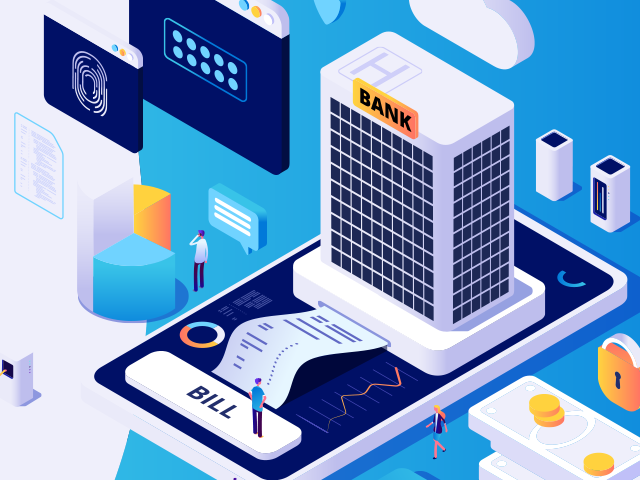Banking has reached a tipping point as growth in new account openings are attributed to banks that are digital innovators. There is also an increase in competitors as alternative banking services firms, from fintech to newcomers like Google, are gaining new customers and followers.
Four out of five financial institutions believe that digital will fundamentally change banking and completely transform the industry’s competitive landscape. But according to research from the Boston Consulting Group, less than half (43%) confess they don’t even have a digital strategy. And an astonishing one-in-five banking execs consider their bank or credit union “market-leading” when it comes to digital.
What are the winning strategies that financial institutions are considering to address these challenges?
Reinvent the customer journey
Learn what matters most during the customer journey. View critical points in the journey and how to improve those segments to improve the customer experience. Empowered customers are in search of a combination of self-directed services and open-channel advice that helps them accomplish more. Studies show that people will open more accounts, pay more for services, and increase deposits with financial institutions that invest in them.
Try to reconnect with customers by giving them thought leadership content, like Bank of America’s Better Money Habits, this website offers various instructional videos on a range of financial topics from credit ratings to loans.
Banks can also utilize giftvertising. TD Bank embarked on its “#TDThanksYou” campaign. For its annual customer appreciation day, the Toronto-based bank surprised focus group members with talking ATMs — “Automated Thanking Machines” — that dispensed personal gifts
Use data
Use data analytics to understand your customer better, identify business opportunities, and reduce cost. Banks can also use business intelligence tools to identify potential risks associated with lending processes in banks. Analytics can aid banks in understanding customer behavior based on their investment patterns, shopping trends, motivation to invest, thus developing personalized banking solutions as well.
Think mobile-first
Mobile banking is spreading rapidly across financial organizations as they seek to meet customers’ expectations. “If your goal is to offer mobile-friendly content to a wide range of people, then a mobile website is probably the way to go,” suggests Clear Bridge Mobile. If an institution wants to improve communication and engagement with consumers who are already customers or members, then the mobile app is a better alternative.
In order to create a successful mobile app, banks must consider:
- Your business goal
- What business challenge would the app address? Can customers access all their banking needs through the app? Would there be chat support included on the app?
- Market research
- As with any business venture, banks need a well-rounded understanding of how mobile banking affects their organization. According to Clear Bridge Mobile you’ll want to focus your research on these areas:
- Differentiate your app’s unique value proposition from your competitors
- Build a competitive analysis spreadsheet
- Examine your competition’s online presence
- Examine your competition’s app store listings
- Analyze your competitions content marketing strategy
- Conduct direct user research
- Talk with business experts
- Don’t forget to monitor indirect competition
- Attend industry conferences
- Analyze industry reports
- As with any business venture, banks need a well-rounded understanding of how mobile banking affects their organization. According to Clear Bridge Mobile you’ll want to focus your research on these areas:
- A product roadmap
- A product roadmap has several objectives:
- Define your vision and strategy
- Acts as a blueprint for executing your plan
- Aligns internal stakeholders
- Assists scenario discussion and planning
- Communicates the status and progress of development
- Clarifies your strategy for external stakeholders
- A product roadmap has several objectives:
- User experience design
- Users have high expectations when it comes to performance and usability. UX is a human-centric approach to managing interaction with technology.
Redefine the operating model
If your financial institution is still using outdated paper-based processes, its time to rethink your workflow. Utilizing a business process management software (BPM) can help lower costs, improve customer service, and gain competitive advantage. According to BCG, most corporate banking executives (86%) agree that digitization will fundamentally change the competitive landscape and the economics of corporate banking business models.
Banks can automate the following processes with the right BPM:
- Retail Credit Approval
- Account Opening, KYC, AML
- Customer Inquiries, Complaints, and Support
- Risk Management
- FATCA and other Regulatory Compliance
- Commercial Loan Approval
- Regulatory Reporting and Oversight
- Collections and Legal Actions
- Discounts, Fee Waivers, and Credit Memos
- Expense Reports and Spending Approvals
- Employee Onboarding
- Policy Document Acknowledgements
- Collateral, Title, and Escrow Processes
Be digitally driven
Clearly make it a priority that digital transformation is crucial to the success of your financial organization. Then support your strategy with funding, talent, and new agile ways of working. According to SAP, banks must embrace innovation and adopt new technology to improve the financial services offering they provide customers. Provide customers with seamless real-time, omnichannel digital interactions. Simplify and optimize business processes through standardization, optimization, and adoption of cloud solutions. Innovate with disruptive technologies like artificial intelligence, robotic process automation, IoT, BPM, and blockchain.
If you keep a digitally-driven mindset, you’ll be sure to create digital banking winning strategies.





